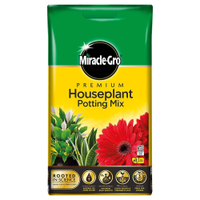How to care for a money plant – an expert guide to keep this prosperous plant happy
This effective guide will ensure your money plant is thriving and growing to it's full potential
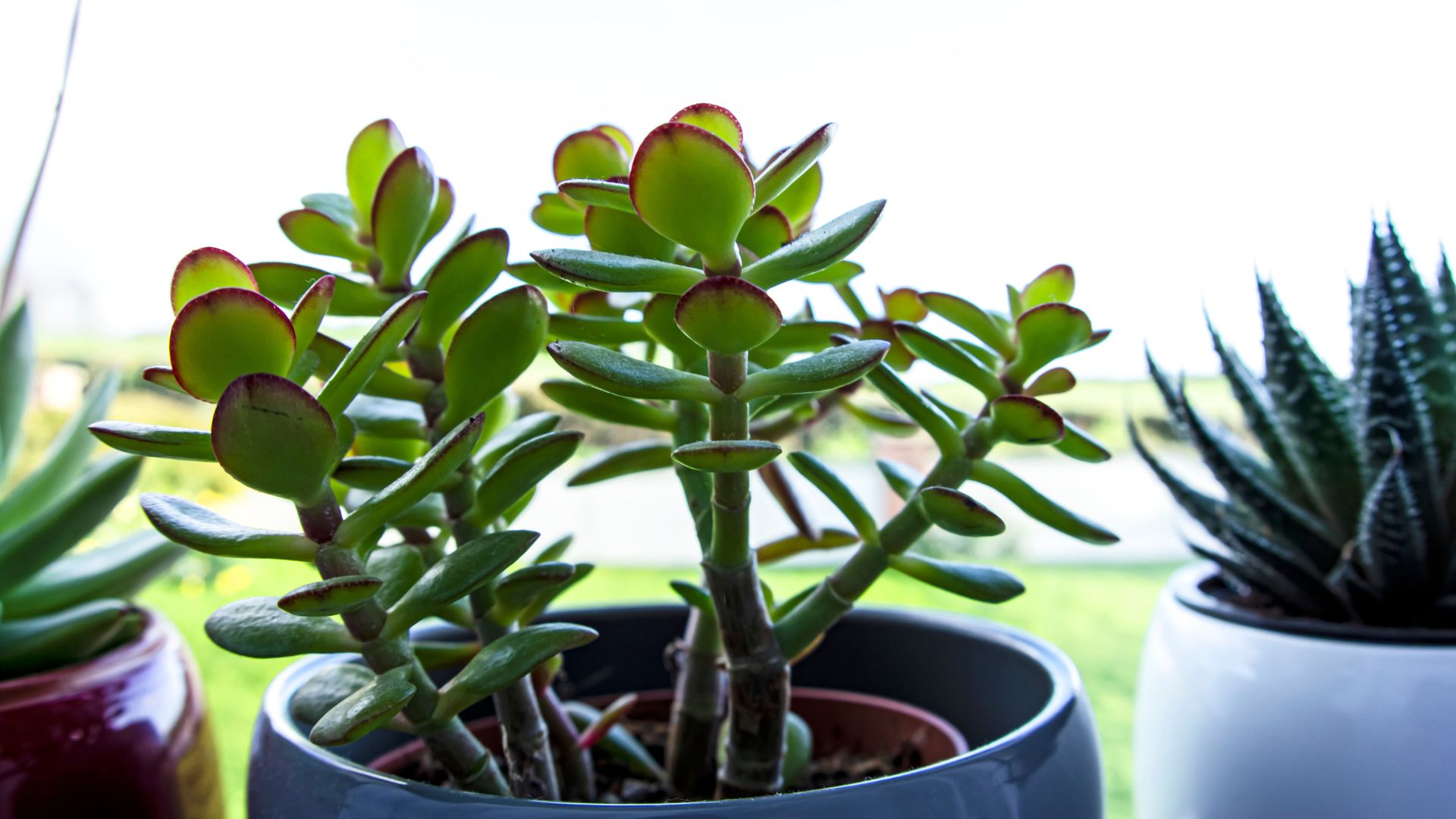

As one of the most popular houseplants out there, you may think there's no need to know how to care for a money plant but as this expert guide shows there are simple tips that will benefit your care routine.
Despite the money plant being one of the easiest plants to keep alive, there are still specific conditions needed to get the most out of this plant. Also known as the jade plant, this species is thought to be one of the best indoor plants for your health and well-being.
Here's a helpful expert guide on how to look after your money plant and keep it growing strong for years to come.
How to care for a money plant: An expert guide
From knowing how often you should water your houseplants to keeping pests away, there's a lot of work that goes into caring for an indoor plant. With that in mind here are the five steps for ensuring your money plant thrives.
1. Consider placement
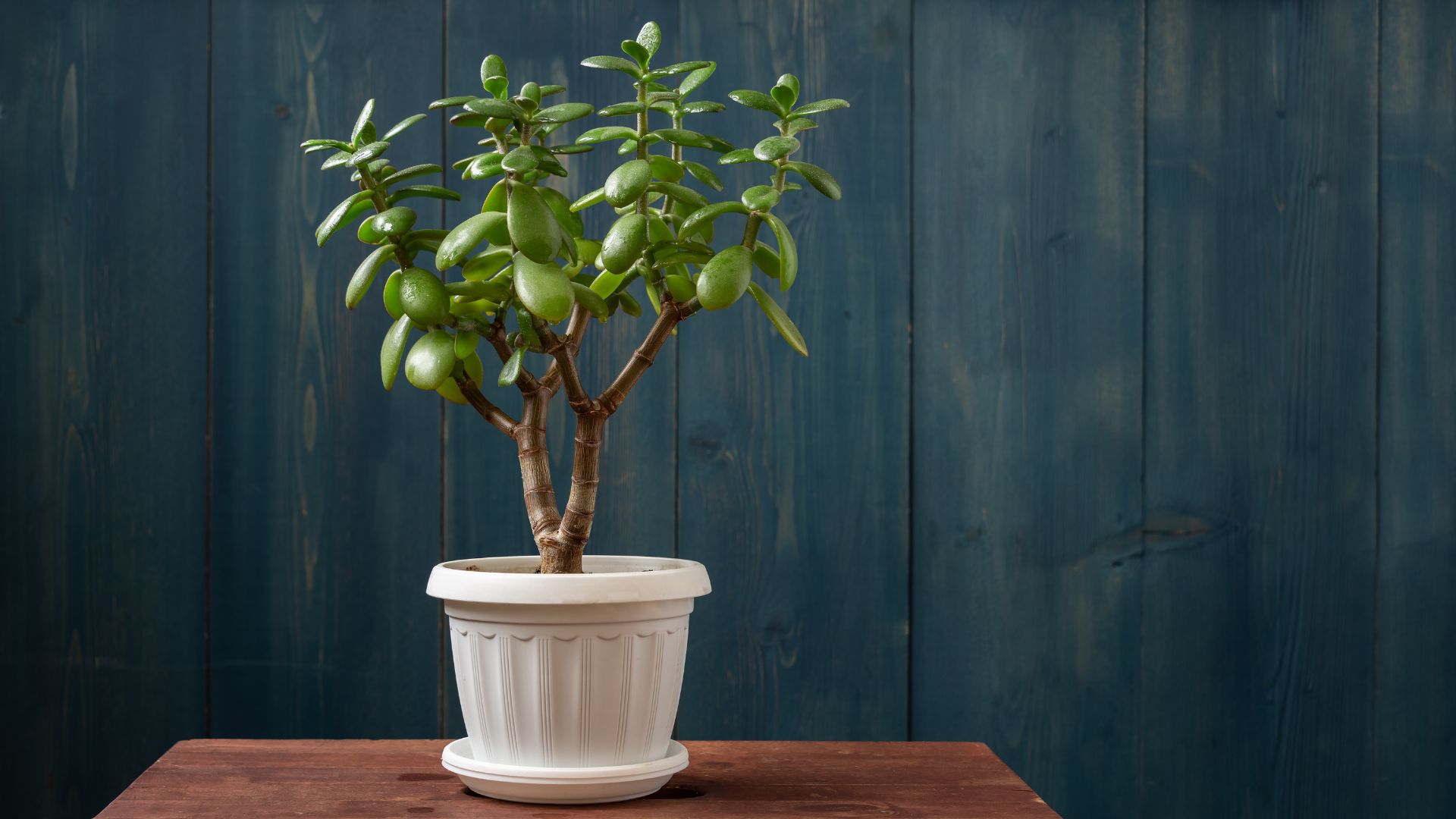
Knowing the right placement for your plant in your home can be a matter of life or death, not to be dramatic but it's very true. Too much sun exposure or heat is one of the most common houseplant mistakes to avoid and this isn't an exception for the money plant.
Plant and garden expert at MyJobQuote, Fiona Jenkins says, "Like other succulents, a money plant needs a good amount of sunlight to thrive. However, too much direct, strong sunlight can be detrimental so the best routine is four to five hours of sun and the rest of the day in partial shade."
She recommends choosing a south or west-facing window for your plant, too little sunlight can make a money plant 'leggy' as she calls it. It's not just the sun too, your plant needs to be in a certain temperature to thrive too.
Sign up for the woman&home newsletter
Sign up to our free daily email for the latest royal and entertainment news, interesting opinion, expert advice on styling and beauty trends, and no-nonsense guides to the health and wellness questions you want answered.
"During the day, the ideal temperature for a money plant is between 20-25 degrees Celsius while at night it should get no colder than 12 degrees Celsius," explains Fiona.
Top tip: In summer, Fiona says you can put your money plant outside which will give it an interesting red tinge around the perimeter of its thick glossy leaves. Just be sure not to keep it outside too long or it may either get too dried out or too waterlogged depending on the inconsistent British weather.

With over 25 years of experience under her belt, Fiona is a trained gardener who offers advice and insight to several trade companies and homeowners. She has also been featured as a gardening expert for several publications.
2. Sufficient watering
Whilst watering may seem like an easy enough task when it comes to maintaining plant life, some species require very different amounts. Too much watering and you may be left asking why there is mould growing on the topsoil of your plant.
"When it comes to watering a money plant, always look at its native growing conditions," explains the gardening expert at Fantastic Gardeners, Petar Ivanov. "Mimicking those as best as possible indoors will be the best you can do for your plant to thrive."
Petar explains that the money plants' native environment consists of intense watering periods along with periods of intense drought. He says, "To mimic that, give our plant two to four extremely deep and heavy waterings throughout the month and, after that, let the soil dry out completely. Make sure that eventually, the soil is well watered."
It's also important to note that the money plants love humidity so if there is excess water in its tray that isn't the end of the world.

Peter has been a gardening and plant expert at Fantastic Gardeners for over 8 years, he is now one of the company's top-performing experts and manages over 6 teams of gardeners. He works on creating stunning landscapes and prioritises sustainability in his gardening methods.
3. Maintaining soil health
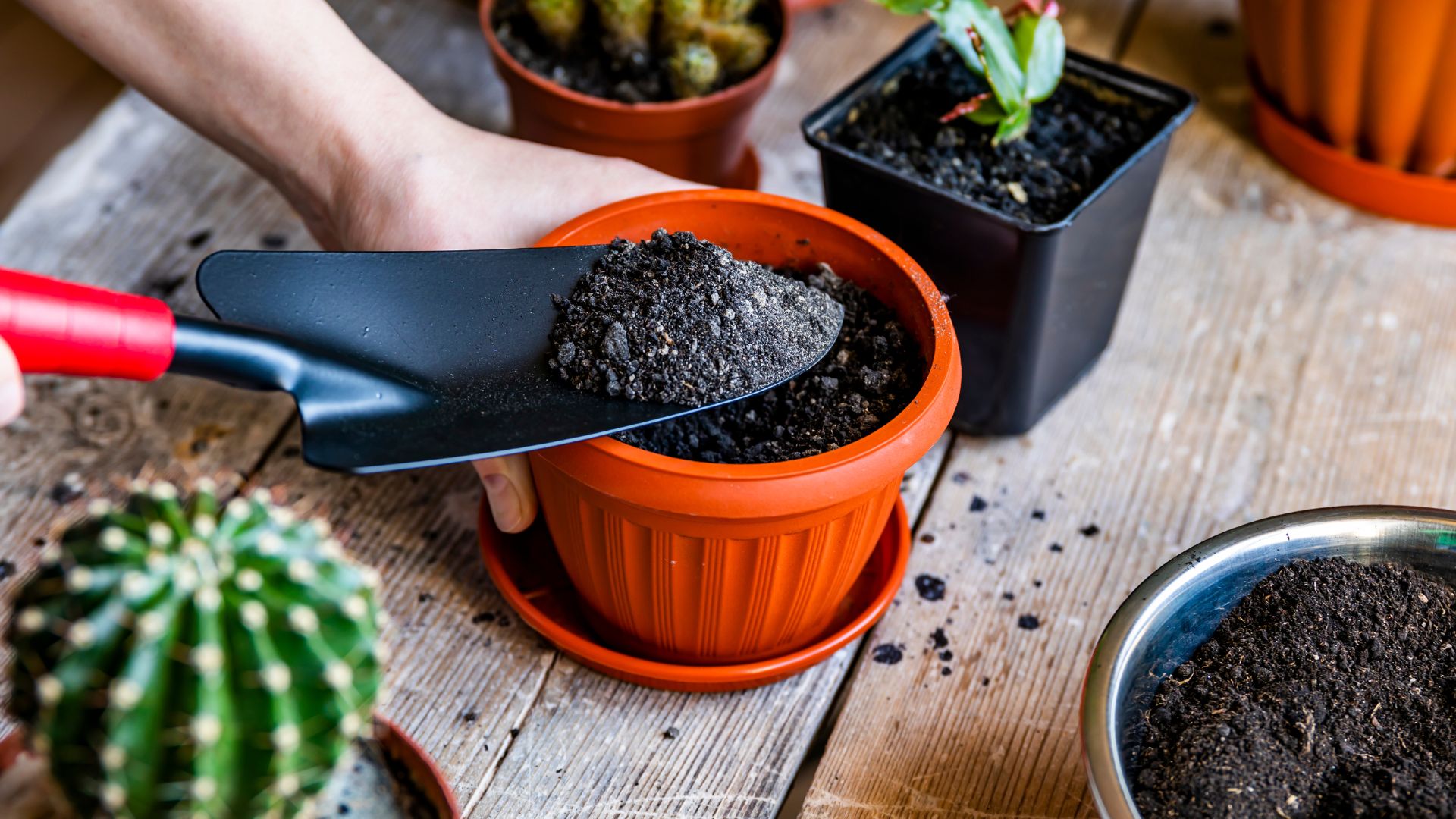
Soil is an extremely important part of caring for your indoor and outdoor plants. Especially if you're learning how to care for an orchid or taking on the challenge of looking after a bonsai tree.
Fiona explains that money plants need rich and very well-draining soil as their roots won't do well if they're held in sodden soil, it can cause root rot in extreme cases. She says, "A loamy soil with added compost and some gravel or perlite is a good mix or better still, a proprietary mixture specifically for succulents and cacti."
More specifically, she states that the pH of the soil should be around 6.0 and between mildly alkaline to moderately acidic. Fiona also recommends adding a layer of decorative pebbles to the top of the soil as this will help retain moisture for the plant.
Miracle-Gro Premium Houseplant Potting Mix: £6.99 at Amazon
Whether you're repotting your money plant or your peace lily needs a top-up, this houseplant soil is perfect for supplying your plant with all the nutrients it needs. This compost gives your plant enough food for three months and it's built to encourage root growth and balance air in the soil.
4. Necessary pruning
Whilst you may know what plants you should be pruning this month in your garden, pruning houseplants calls for a slightly different method and regularity.
"It’s not necessary to prune a money plant but occasionally there may be dead leaves or branches which can be removed for aesthetic purposes," explains Fiona. "Some people like to use money plants for bonsai trees and this is achieved with pruning as well as specific bonsai techniques."
Should you want to prune your money plant, for whatever reason, then be sure to use clean secateurs, prune at a node and never prune more than 20% of your plant. If you do, you could be doing more harm than good.
5. Pests and disease control
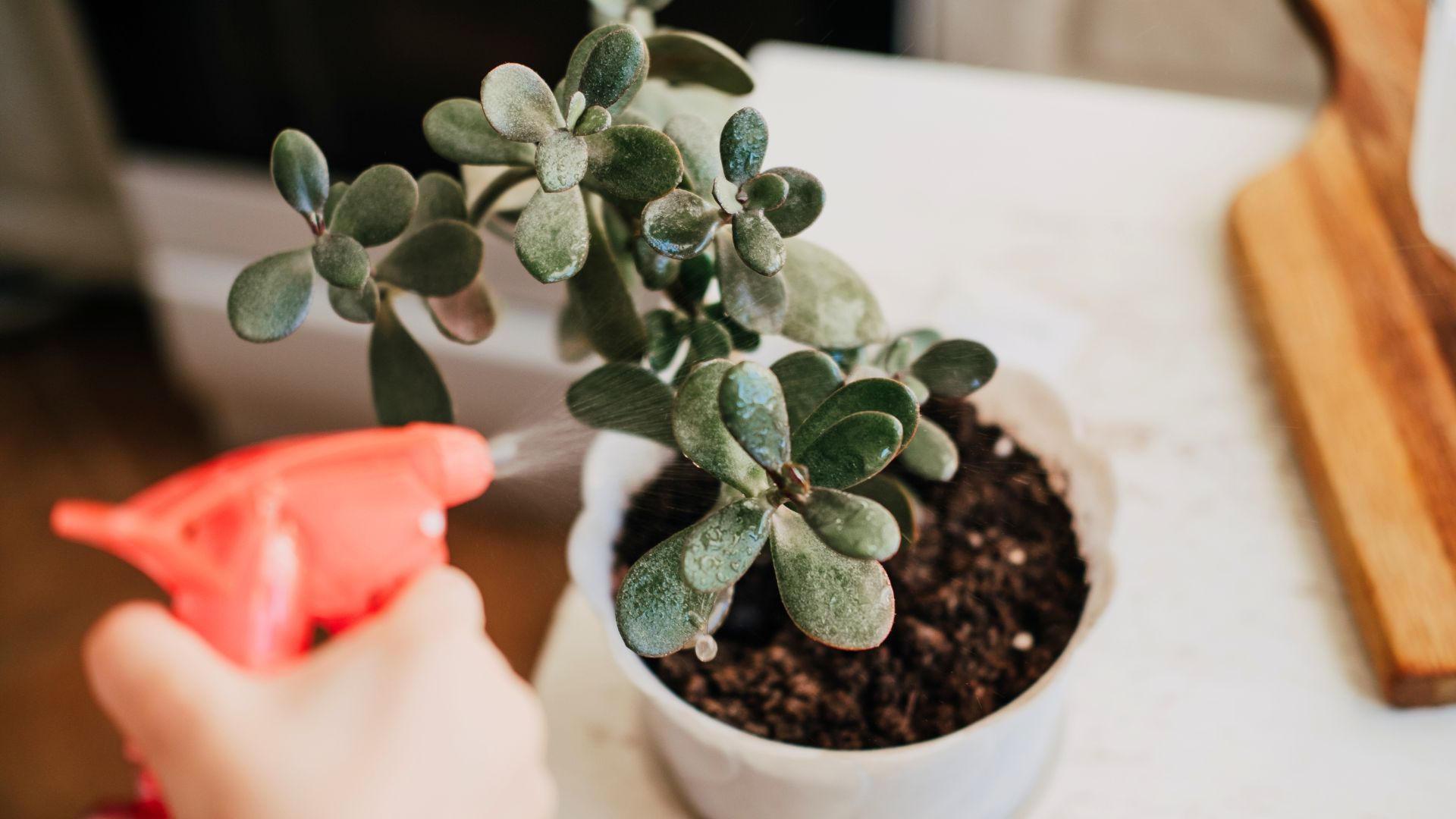
As is true with how to get rid of leatherjackets in a lawn, being aware and ready for plant pests is the best way of stopping them completely. There are a few pests and diseases that you may encounter when caring for a money plant.
Fiona says, "Money plants may be vulnerable to pests such as aphids, vine, weevils and mealybugs, particularly the latter. Unfortunately, succulents don’t react well to insecticides, even organic ones."
Insecticides can have damaging effects on the foliage so instead Fiona recommends pruning where the disease or pest is presently showing.
If this seems impossible due to a larger infestation, she suggests cleaning the plant with a soft cloth dipped in isopropyl alcohol and repeating the process every day for a week or two until the pests have cleared.
FAQs
How do you repot a money plant?
Knowing when to repot your plant and how to repot your plant is a very important step in keeping up their long-term maintenance.
"When you're repotting your money tree, first carefully remove it from the pot, gently untangle its roots if they're tangled and cut away any mushy ones with a sharp and clean knife," explains Petar.
"Put potting mix into the pot until the root ball is covered well with around 2,5 centimetres of soil. Finally, fill in any remaining holes around the plant. Finish by watering the tree until the water drains from the bottom of the pot," continues.
You will only need to repot your money plant around every two years but just make sure to keep checking on its root growth, if they're growing out of the pot then it may be time for a repotting.
Now you've mastered how to look after your money plant why not start collecting the best fragrant plants to make your home smell good? There are so many species that can rid your house of unwanted smells, there are even certain species of plants that can make your kitchen smell good.

Emily joined woman&home as a staff writer after finishing her MA in Magazine Journalism from City University in 2023. After writing various health and news content, she now specialises in lifestyle, covering unique cleaning hacks, gardening how-tos, and everything to help your houseplants thrive.
